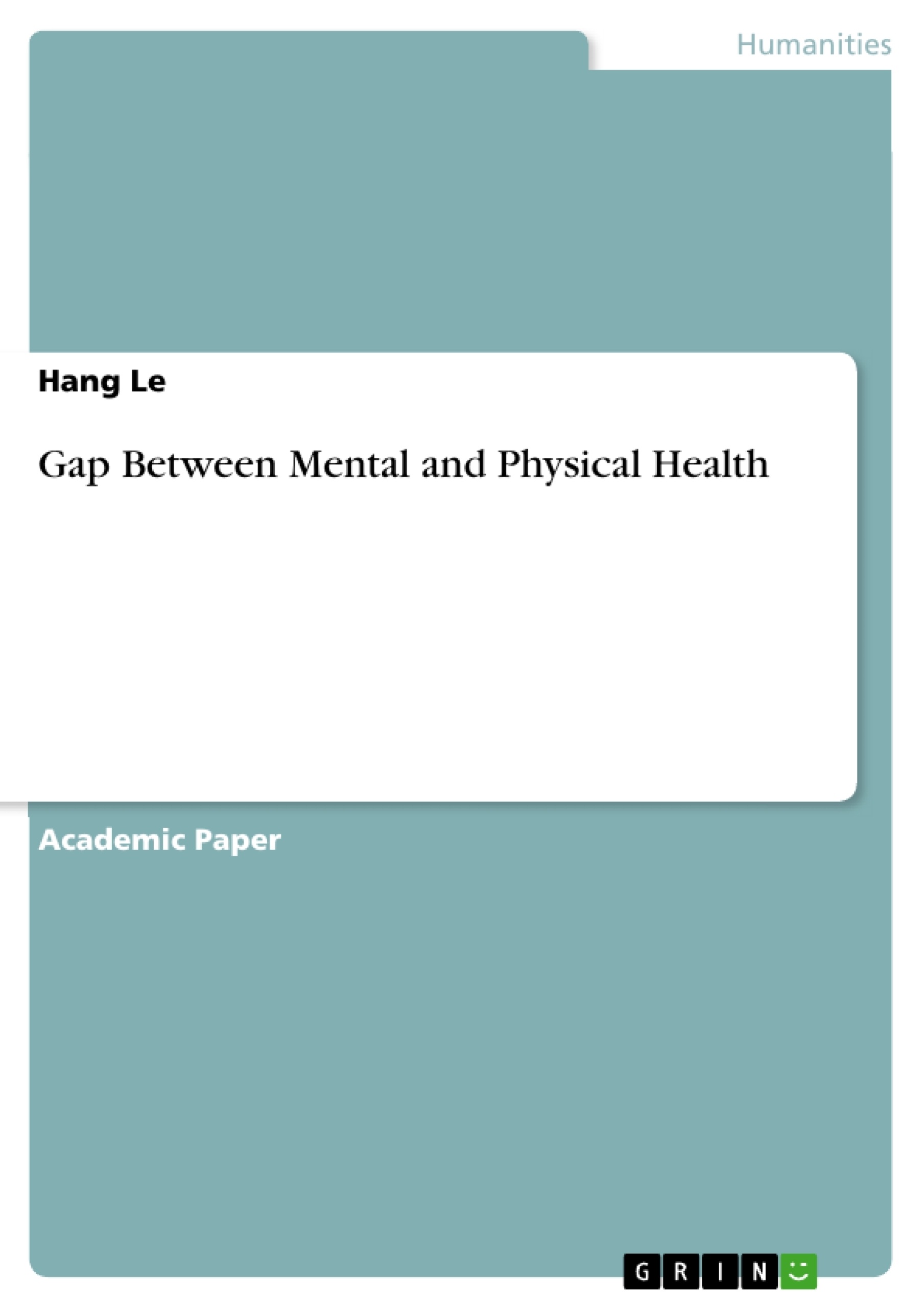Within health care, mental illnesses have not been readily accepted as an exclusive field of medicine. Even more so, there are still many speculations about the need to care for or maintain the state of one’s mental or emotional well-being when compared to the importance of seeking immediate treatment for physical indications. Such divergence in viewpoints requires a more thorough understanding of the biological and psychological aspects, not as separate components, but rather as interdependent. According to Vaughn, mental or emotional health refers to an individual’s overall psychological well-being, which includes the way they feel about themselves, the quality of their relationships, and their ability to manage feelings and handle hardships (2014). As for physical health, it can be viewed as the state of an individual’s body to function without limitations or complaints.
Inhaltsverzeichnis (Table of Contents)
- Introduction
- Literature Review
Zielsetzung und Themenschwerpunkte (Objectives and Key Themes)
This paper aims to explore the gap between mental health and physical health, analyzing the reasons why mental health is often overlooked and disregarded in comparison to physical health. It investigates the historical context, societal views, and scientific evidence surrounding this disparity.
- The Historical Evolution of Mental Health Care
- The Mind-Body Connection and its Implications for Health
- Societal Perspectives and Stigma Surrounding Mental Illness
- The Importance of Recognizing and Addressing Mental Health Issues
Zusammenfassung der Kapitel (Chapter Summaries)
- Introduction: The introduction highlights the disparity in care and attention given to mental health compared to physical health. It emphasizes the need for a comprehensive understanding of the biological and psychological aspects of health as interdependent.
- Literature Review: This section delves into the historical context of mental illness, tracing its evolution from ancient times to the modern era. It examines the changing perceptions of mental illness, the emergence of mental health hospitals, and significant milestones in mental health care reform.
Schlüsselwörter (Keywords)
The main keywords and focus topics of this paper include mental health, physical health, mind-body connection, societal perspectives, stigma, historical evolution, mental illness, and healthcare disparities.
- Arbeit zitieren
- Hang Le (Autor:in), 2018, Gap Between Mental and Physical Health, München, GRIN Verlag, https://www.grin.com/document/388632



